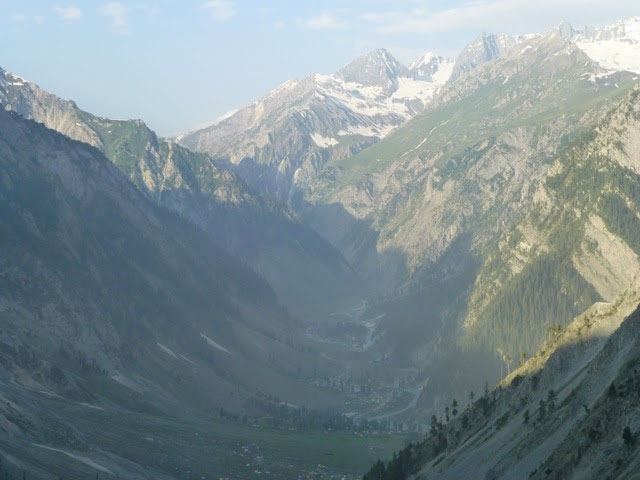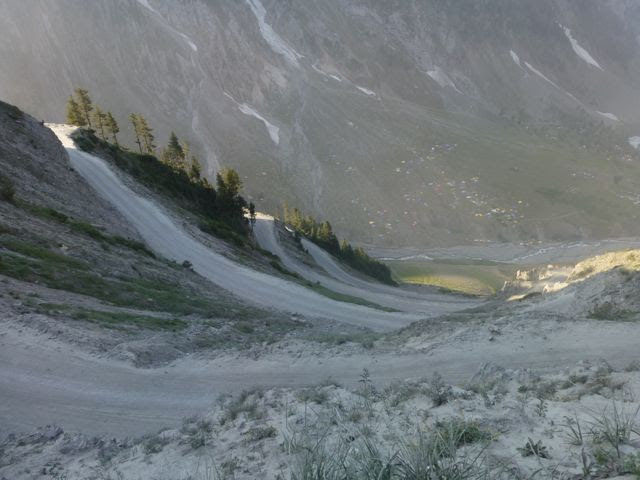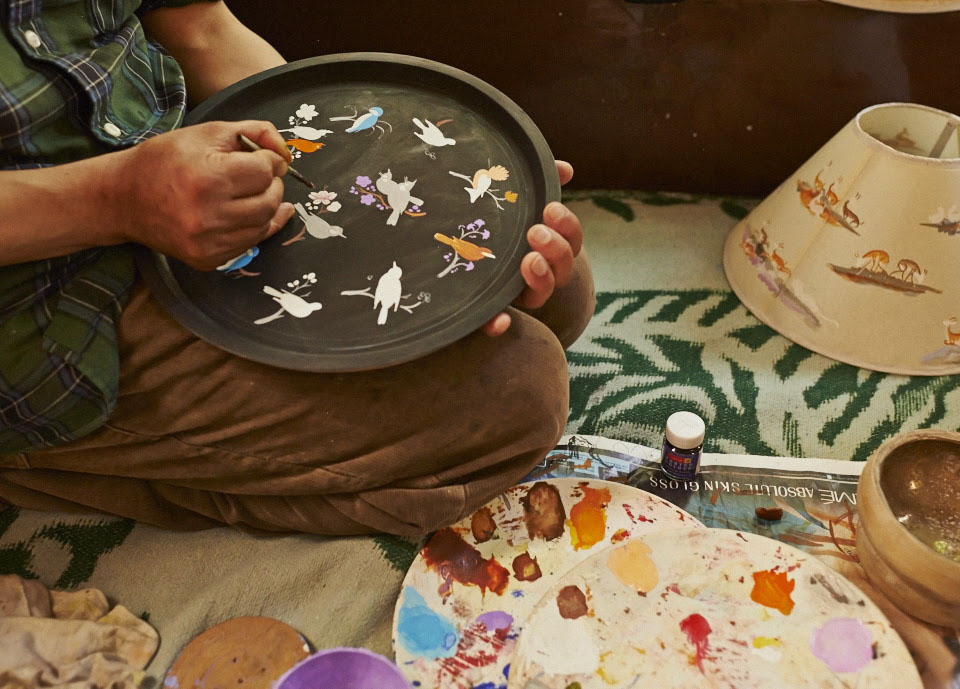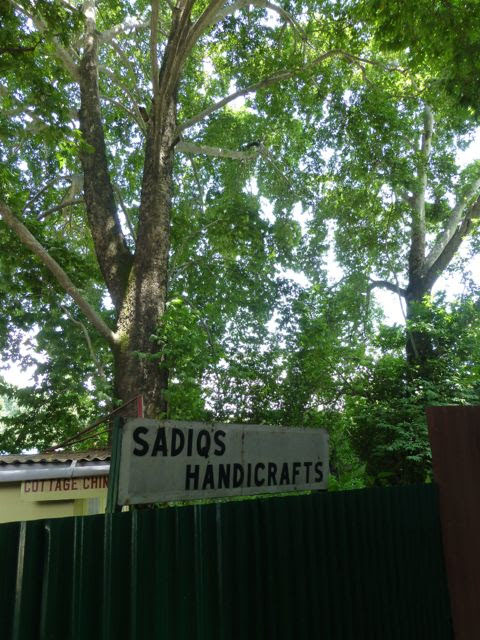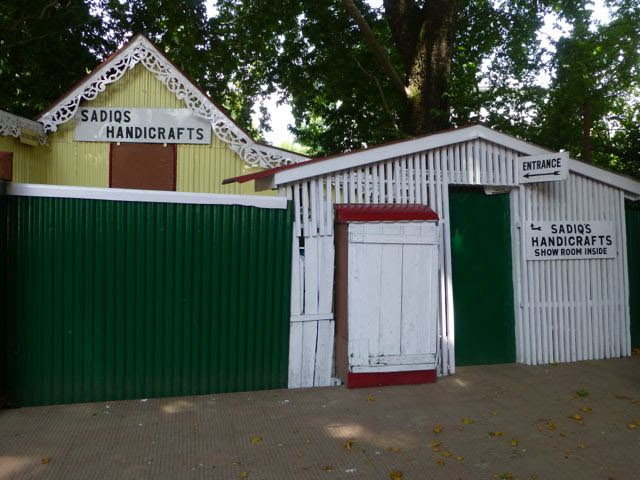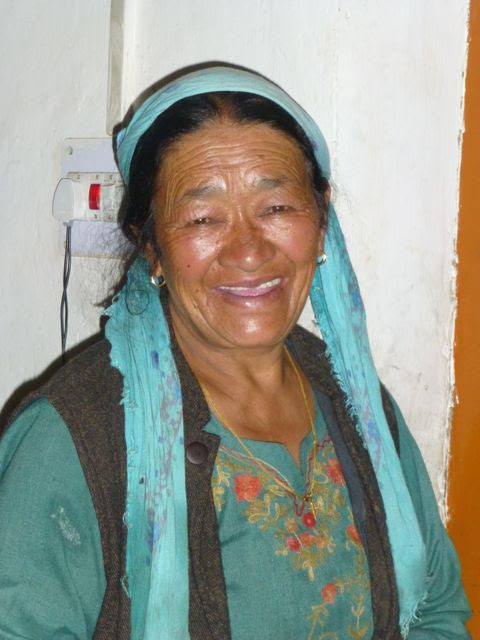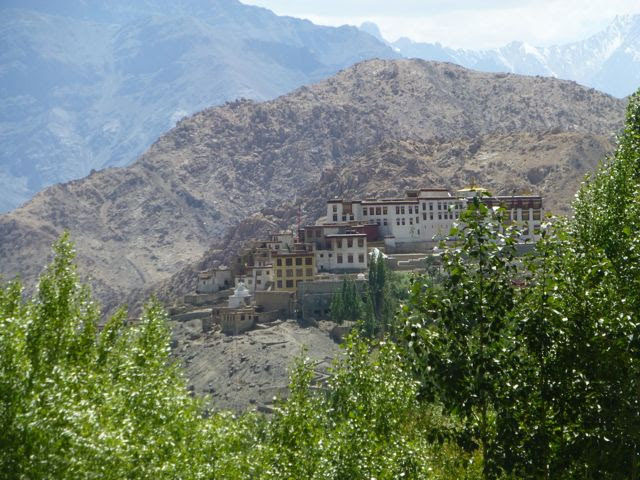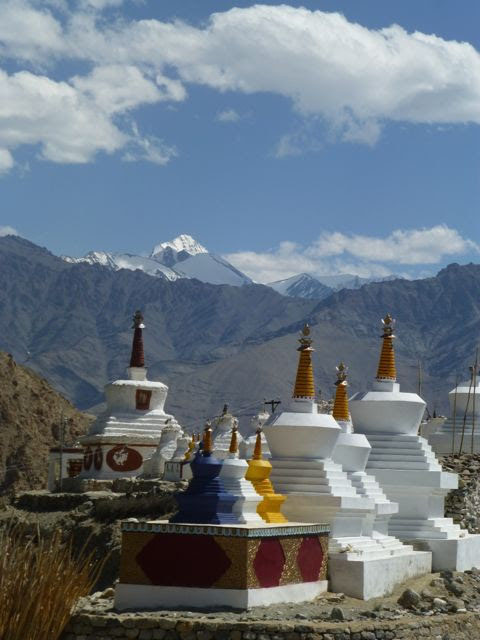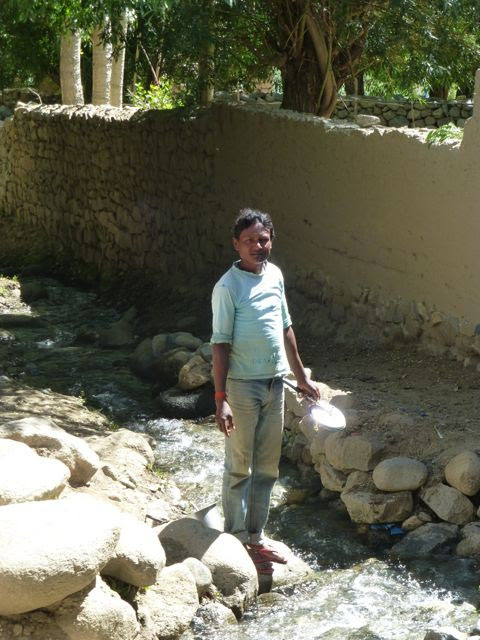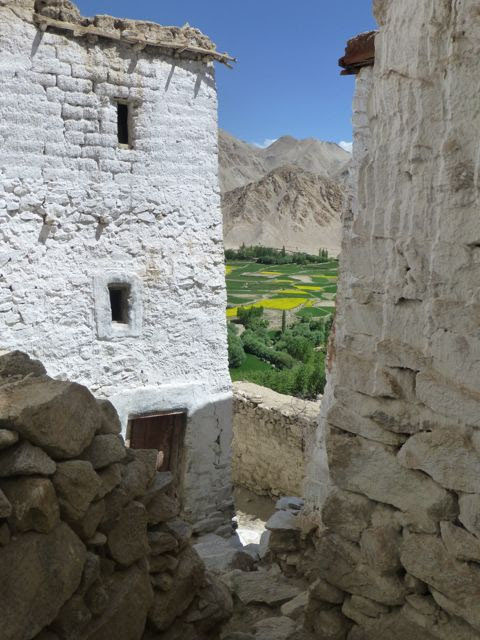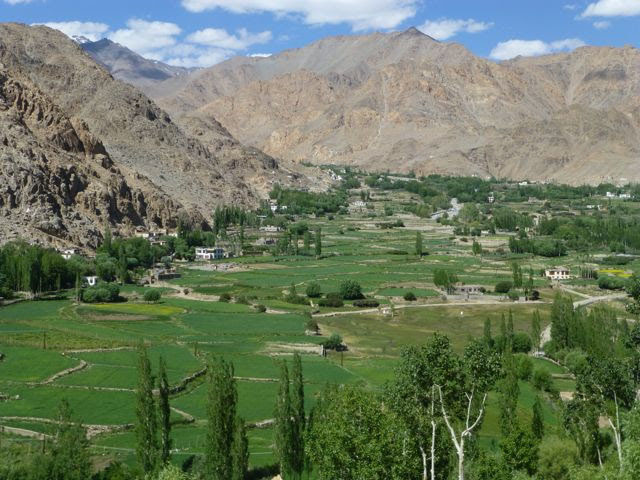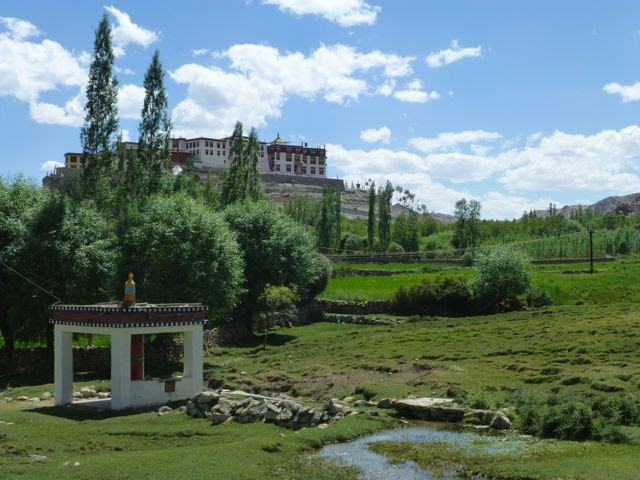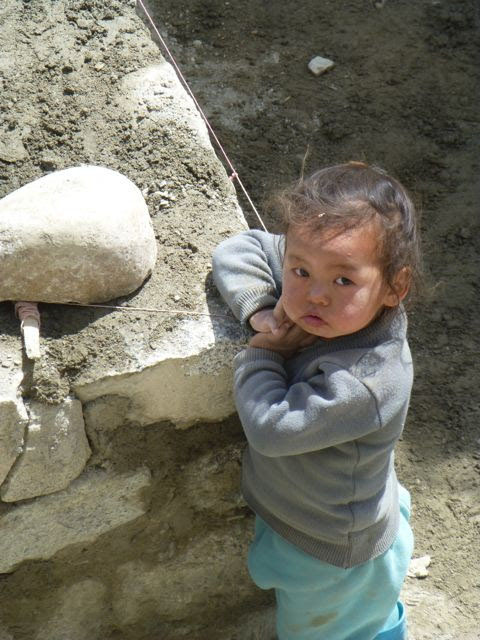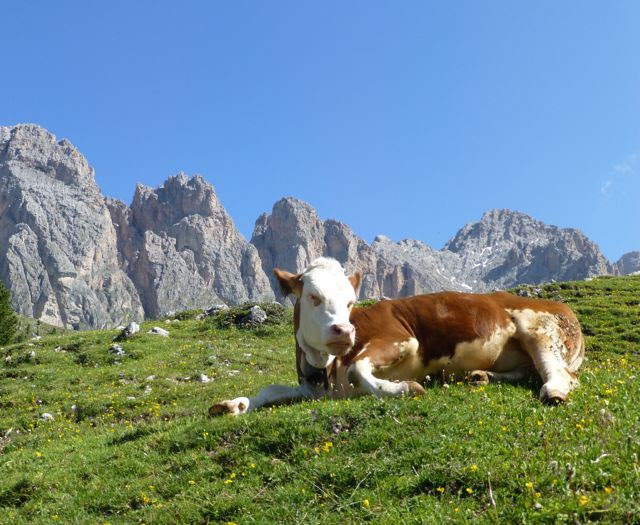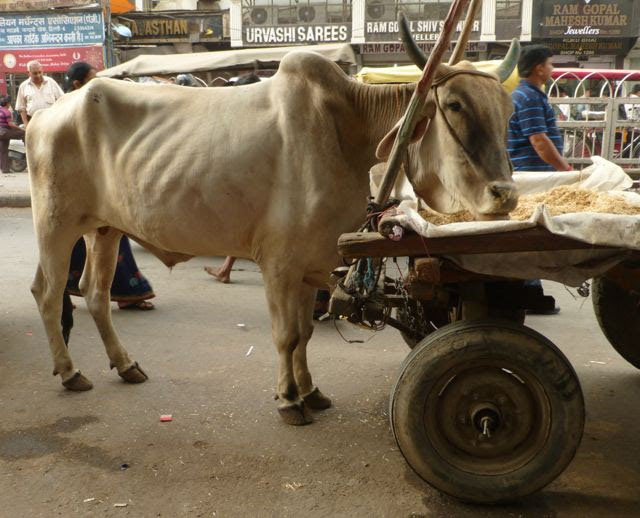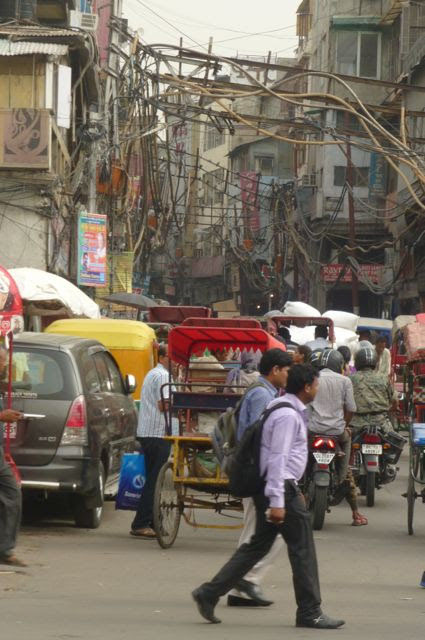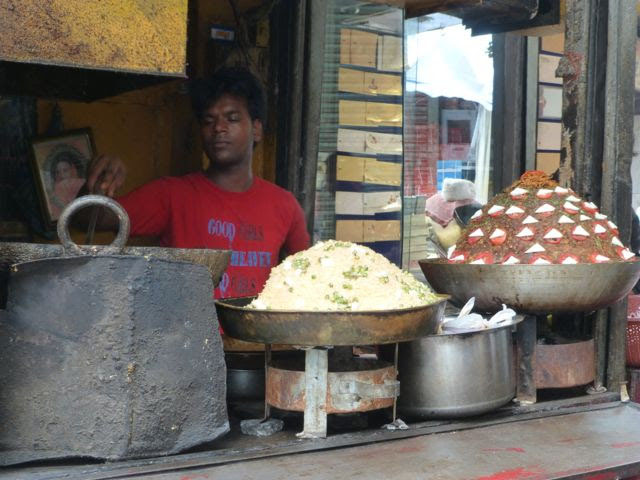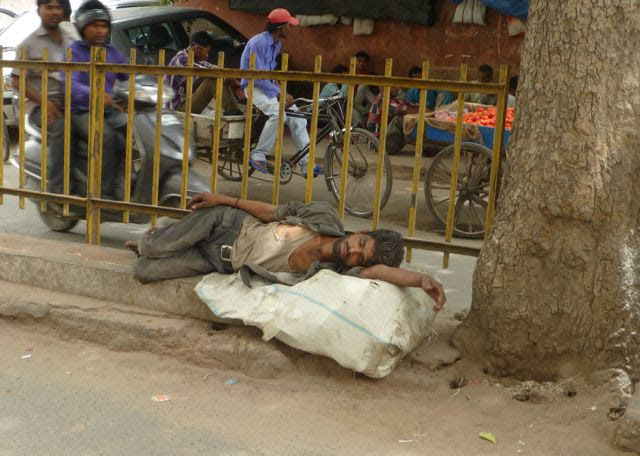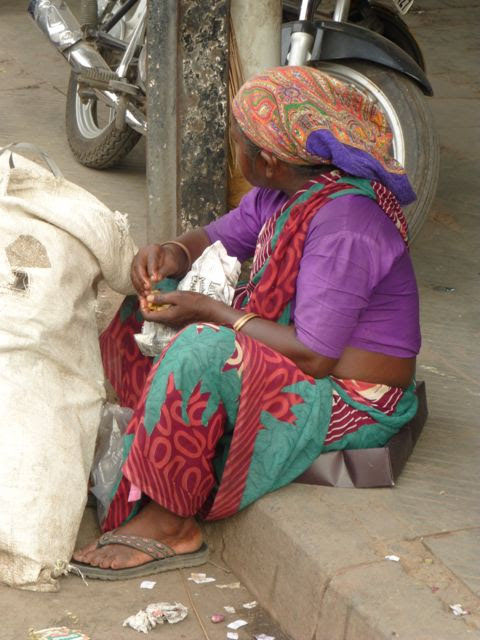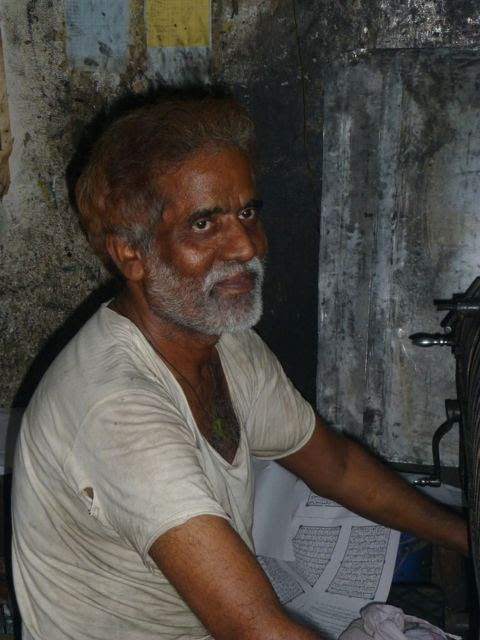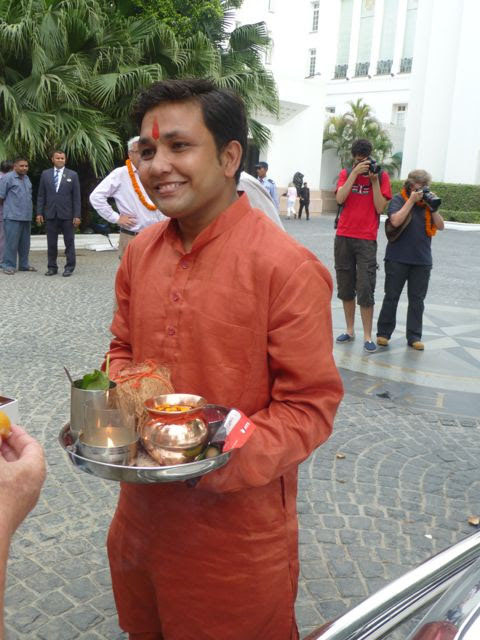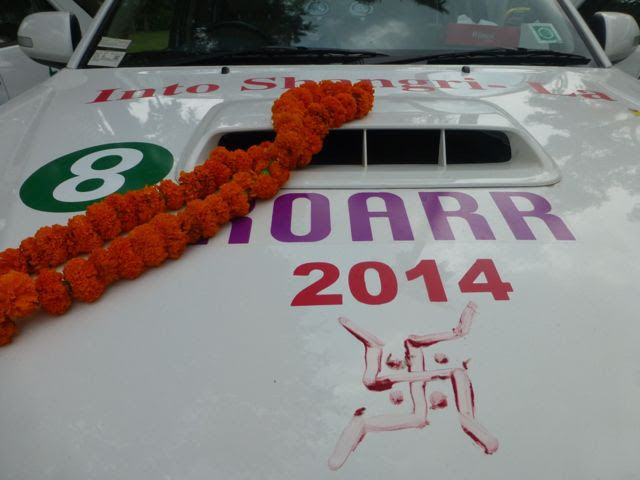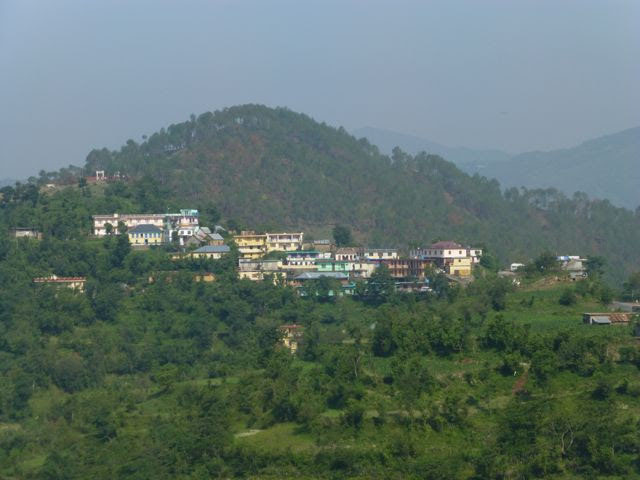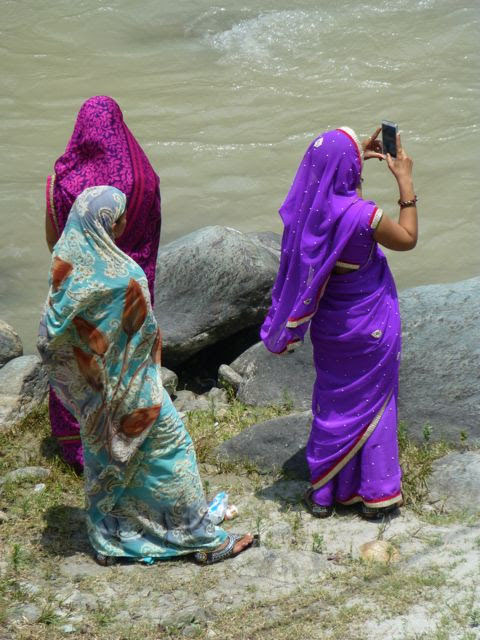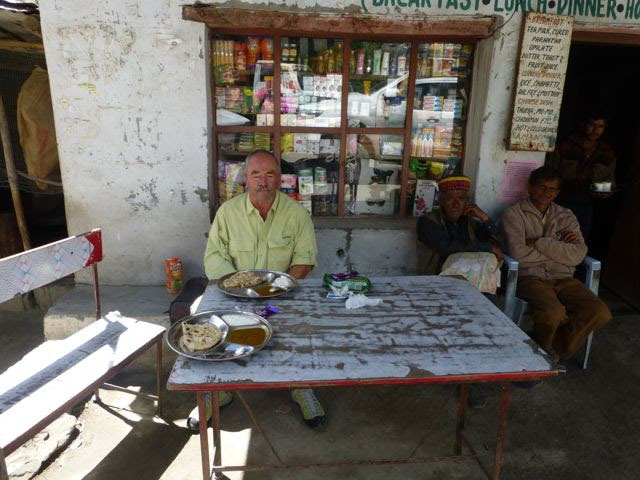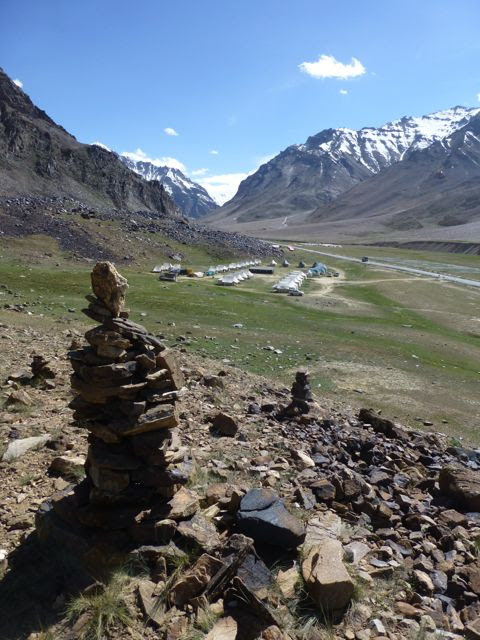-
Archives
- November 2017
- November 2016
- October 2016
- April 2016
- March 2016
- November 2015
- February 2015
- July 2014
- June 2014
- October 2013
- January 2013
- October 2012
- July 2012
- April 2012
- March 2012
- February 2012
- January 2012
- December 2011
- November 2011
- October 2011
- September 2011
- August 2011
- July 2011
- March 2011
- February 2011
- January 2011
- November 2010
- September 2010
- April 2010
- March 2010
- February 2010
- March 2009
- February 2009
- March 2008
- February 2008
- November 2006
- August 2006
- March 2006
- August 2005
- July 2005
-
Meta
Monthly Archives: July 2014
As the Wheel Turns 5
End of the Road
Our car jerks into an open sliver of sun-baked street, Bernard at the wheel, me staring out the side window so I don’t scream at how close everything is. Start. Stop! Advance a few inches. Stop!!! Despite my severe nearsightedness, at this rate I can easily read the road sign that says SRINAGAR. I’m a road worrier, not a road warrior, and now I fret it will take us as long to get to our hotel as it did to drive the entire 2200km from Delhi via Ladakh. Eyeing our MapMyIndia GPS, I see we’re advancing in meters instead of kilometers. My leg taps and I twist my hands in my lap. It’s June 12, I’m thirsty, I’m hungry, and there are Mughal gardens to visit, handicrafts to assess, kawa tea to sip, and, if I plan things right, a pedicure to indulge in.
Then again, I’m ecstatic to be on level ground, since I’m still not recovered from our descent of Zojila Pass. Tho’ we’ve driven close to 100,000 miles in the past 7 years, Zojila is the scariest road I’ve ever been on, not helped by me being on the outside looking at the long plunge down, while Bernard held a movie camera out his window with one hand, steering with the other. In the interest of marital harmony I’ve kept quiet about lots of shenanigans on our road trips, but this time I say some stern words to remind him Bollywood was not yet knocking on his door. And then I sucked in my breath, thinking it would make me thinner and thereby prevent us tumbling down the cliff face, creating the sort of headlines I never want to make in a foreign country.
Thus, we reach Srinagar in the company of every working bus, car, and motorbike, which swarm around us, horns blaring, while pedestrians crowd into the empty spots, all intent on getting to where they’re going before we get to where we’re going. The sun beats down and a humid haze turns fabled Dal Lake, of the palace houseboats and floating gardens, into a faded painting of yesteryear. Soldiers lounge along the roadside, rifles slung over shoulder, casually chatting, eyeing the raucous traffic. They occupy the same shade of massive chinar trees as the dogs sleeping off a hard night of barking. The similarity of their camouflage uniforms to the dappled shade not withstanding, they’re highly visible. Poor Kashmir, tugged this way by India, that way by Pakistan, wanting only to be left alone as an autonomous region. Despite Indian government claims of necessity, this military presence is oppressive. And honestly, if anyone’s going to attack, they’re not going to do it by
strolling down the avenue in broad daylight, are they? Who could mount a full frontal assault in such traffic mayhem anyway? So I say, move those soldiers out of town and get rid of the guns on the street.
A splash of cool water on my face, a quick change into my favorite flowing green batik dress topped by a filmy pale blue shirt cinched at my waist, and we are on our way to Cottage Chinar on the Bund, shop of Mr. Sadiq Wani, himself the grandson of a papier mache artist Bernard met 35 years ago. My travel mantra : spend time with people who exist today, rather than with ancient monuments of yesteryear. I know, I know, this is not the usual way. Still, when I travel in far-off places, I want nothing more than to blend in, and spending time with people is the best way I know to do that. An afternoon with a potential new pal is fine with me.
As we enter into deep conversation with the erudite Mr. Wani, I forget I am a foreigner. When he proposes a cup of Kashmir’s signature kawa I say Yes quickly, before Bernard, who’s a coffee drinker, can say No. Quiet clinking and stirring drifts from a small back room and Mr. Wani returns, bearing two delicate porcelain cups covered in lapis and gold filigree. As I stir the small Kashmiri almonds in the cardamom/cinnamon brew, a curl of gently spiced steam rises from the cup. Although the tea begins to cool, I sip slowly. A warm breeze enters through the small frame windows, sent to soothe us by the ancient chinars that hold this white and green cottage in protective embrace. In this quiet shop with pink hollyhocks in the garden and mynahs tweeting in the high branches, I want to prolong our peaceful afternoon as long as possible.
I can hear readers cry, “But what about Srinagar’s mosques, temples, forts? Didn’t you visit them?” Call me a poor tourist, but don’t call me a bad traveler. I cherish these simple experiences. Like our walk in Srinagar’s Badim Weer, the almond grove garden, unlocked for us by a kind park guardian late one the afternoon as the sun’s harshness was fading and the lake provided natural cooling. Alone among the almond trees, past stands of luscious magenta and canary dahlias, we dawdle while hawks circle the updraft of Hari Parbat hill and the red brick Durrani fort atop it. I daydream of drifts of white and pink almond blossoms covering the ground like snow.
One evening, in the late twilight of this Ramadan, I don my favorite outfit, a kameez top of bright embroidered magenta cotton setting off my deep burgundy, ballooning salwar trousers, topped by a dupatta scarf of olive, tawny yellow and red, woven through with gold threads. We are invited to a local home in Raj Bagh to break the fast. Down a narrow lane, through a green door set deep in a mud brick wall, and we enter a magic garden of green lawn, yellow sun flowers and brash orange geraniums.
Halima, our hostess, welcomes us to a table set with Kashmiri dishes. To be honest, I’ve heard Kashmiri cooking is intensely spicy. And I don’t do spiciness well. It turns my face red, I drip with sweat in a most unfeminine way, and my eyes water as if I’ve just heard of a death in the family. As we sit down I try to calm my nerves, dreading I might offend our hostess by not being able to eat much. Fearing just this sort of spice calamity, I’ve used my favorite ploy which is to distract and conquer. To be specific, we’ve arrived bearing gifts, and not just any gift, but the Taj Vivanta’s chocolate truffle cake, best in Srinagar I’m told. My hope: that the promise of sweets will distract or at least make up for any ill manners I might display.
But there’s something else that makes me anxious. Bernard turns to me when he can’t deal with what’s edible or drinkable in front of him. As he’s my savior on the road, so I’m his with food and beverages. Thus, in a Tibetan monastery I had to drink his cup of yak butter tea, too, though I could barely swallow mine. And that rank glass of cloudy green/brown barley beer on a farm in Ethiopia? Yup, double-duty there as well. What would I do now if I had to finish his plate after perhaps not being able to make a dent in mine? Not only might I give the impression that American wives don’t let their husbands eat, I might burst. My salwar is roomy, but not THAT roomy!
I watch as he spoons creamy chicken, citrusy baby eggplants, homemade paneer with caramelized onions in tomato sauce and sautéed gourd mixed with bindi (okra) onto a plate heaped with basmati rice. He eats. He takes a second helping. I relax and do the same. We talk of many things, laugh, reminisce. It looks like I’ll have room for chocolate cake after all.
It’s the end of the road. ‘Til next time…….
Posted in Dispatches, LeMans, France / Ladakh
Leave a comment
As the Wheel Turns 4
Hidden Paradise
Shangri-La. How we conjure with what that evokes. It appears as Hilton’s mystical green eden in Lost Horizon. Shangri-La…. Its promise of love and peace is real but elusive, just out of sight, around the next corner, if we get there.
Where is Shangri-La? Some say it’s in China’s Kunlun mountains, through which we drove last year in Tibet and before that in Tajikistan and China. I didn’t see it, though maybe that’s the fault of the dense smog that obscured most everything. There’s a claim that Pakistan’s Hunza Valley is the true Shangri-La. Others suggest the real earthly paradise of the fictional Shangri-La is in the Himalayas, a hidden valley referenced in Tibetan Buddhist texts as an idyllic and sacred place of refuge.
My personal contribution to the myth is to suggest it’s in Ladakh. Hidden in the steep, bone-dry hills of this 13,300-foot plateau which receives 3.5 inches of rain a year, are narrow valleys. They run like spokes from the calm, Buddhist town of Leh, each one is a separate treasure of tranquility and beauty such as I’ve never experienced elsewhere.
Under the serene protection of a Tibetan monastery perched on a nobby brown hill, stands a collection of stupas said to house sacred relics related to Buddha.
The oldest have sides made soft by centuries of erosion, while newer ones are tall and sharply defined. Some have mani walls, built up over the centuries by pile one rock on another, and these walls can be many yards long. All stupas, even the most crumbling are freshly white-washed and draped with prayer flags, in honor of the presence of the Dalai Lama in Leh,
Just beyond is a patchwork of emerald and canary fields divided by stone walls and stands of slender poplars, leaves fluttering.
Glassy blue-grey water gushes down narrow canals that draw from tumbling rivers swollen with snowmelt. A willow casts a deep shade on the dirt road leading to the village, where rose bushes bursting with pink blooms hug the white stucco houses.
Each flat roof is already partially covered with the stacks of hay and the dung patties that are needed to see each family and their livestock through seven months of deep freeze each winter. The cobbles of an ancient lane are bed to a fluffy beige dog which slumbers, impervious to a cluster of flies tickling its nose.
The air is warm, faintly smoky, with a floral perfume of sweet william, geranium and rose.
In the middle of a pasture dotted with brown and black cows, a red gilt prayer wheel spins, casting its prayers to the wind, yet no one walks around it. Completing each revolution it makes a slight, ee-oo squeak, silently turned by the invisible hand of water power. Red finches hop and peck, pigeons do a languid mating dance, issuing their burbling coo. A woman with a stick moves goats from one field to the next and in the distance the pock-pock of a mallet on stone suggests a summer building project is underway.
If this isn’t Shangri-La. what is?
Posted in Dispatches, LeMans, France / Ladakh
Leave a comment
As the Wheel Turns 2.5!
Dolomites to Delhi
I don’t want anyone to have too great a shock when my next dispatch arrives from the far kingdom of Ladakh. Because if I’m having a bit of a time getting used to the change I can only imagine what it’s like simply to read about it. One moment I’m faced with this:
And the next, this:
I had a little reverie about the vast differences in view above. There are two sacred cows lounging on a sunny Delhi garbage heap, one munching a plastic sack, the other fondly licking a yellow and silver foil bag of chips. One says, “Do you ever think about the after life?”
“Sure, every day. You?” says the second one.
“Yeah, me, too. In my next life, I hope I come back as a pariah dog,” sighs the first one, pointing his shiny nose enviously toward a dog lounging in a damp gutter shaded by a stout banyan tree covered in twisted vines.
The other one looks around and said, “Not me. When I come back, I want to be Italian.”
So, here we are in Delhi, about as far away from the Dolomites in look, feel, taste, sound and smell as one can possibly get.
It is great to be back in India, despite that the 106F temperature left me feeling like I was walking around in my own personal hot tub. I still find a dinner of richly spiced dal and basmati rice enticing. A breakfast started with watermelon juice quenches my morning thirst immediately and the rich magenta of the juice seems a statement of the world of color that awaits.
Despite the heat we’ve been walking around, mainly in old Delhi, where streets narrow to lanes, then alleys, then cobbled paths where the buildings shadow the ground and wires and cables seem to seethe overhead.
Is it my imagination or are the streets more packed than last time? Some say everyone’s out more because Ramadan started on June 29. Perhaps it’s because it’s summertime.
Or maybe it’s just that I feel the heat of the crowds more since I’m so darn hot myself. In a manner of speaking….
Today we begin our drive north. We held a short puja for us, our cars and the route ahead. As in 2009, limes and a coconut were put under our car tires, we each were ringed in marigold necklaces and an important symbol of safety was smeared on the trunk.
Sweet smoke from incense wafted about in the still humid morning air. The red tilak placed between my eyebrows by a damp finger covered the seat of memory and thinking. A few uncooked grains of rice were flung at me, to make a point. All this was meant to protect my energy and, being red, to channel my warrior instincts, As it dried, it itched. Mindlessly I kept rubbing at it with my hand as we navigated up the packed roads toward the Delhi outskirts. By the time I looked in the visor mirror, it was smeared all over my forehead. Energy dispersed. I took a wet wipe to the red swath above my eyes as we headed north on the Grand Trunk Road.
Unlike previous trips I haven’t present a completed map yet, thinking you might like to piece together our route yourself, using Google Earth so you can see how high we’re going to be. Our stopping points:
Delhi
Chandigarh
Shimla
Manali
Sarchu Pass
Leh
Uleytokpo (~50km west of Leh)
Kargil
Srinagar
We’ll be traversing 4 of India’s 29 states: Delhi, Himachal Pradesh, Punjab and Jammu-Kashmir. Each state used to have its own ruler of course, before all were combined into one India. And there were varying ethnicities, too. All of which is to say that India is not one homogenous country, but a country that has been melded starting in 1947 and continuing for decades thereafter. Take a look
Happy researching and keep your fingers crossed that we drive safely.
Posted in Dispatches, LeMans, France / Ladakh
Leave a comment
As the Wheel Turns 3
Higher
It’s monsoon in the high hilltop town of Shimla, favorite retreat of the British during the Raj, the place where they escaped the heat and humidity of Delhi. I can relate. Delhi has been unspeakably hot and humid and, Raj or no, I am happy with the promise of coolness.
The rain is a clear, beaded curtain of water drops. Before, the air is heavy as an old wool blanket. After, it’s ten degrees cooler and the air is fresh as clean laundry. When the first strands slash to the ground I take my bare feet outside to savor the cool puddles. Two black-haired girls in bright sweaters crouch under a purple and a yellow umbrella, laughing as they inspect rivulets coursing down their steep lane. The hotel staff looks askance as I lift my face to the trees to feel the water from head to toe.
Monsoon time is tricky, like an eccentric uncle who promises a visit, but then doesn’t show. What can you do but wait and wonder? Here the monsoon’s arrival was announced for June 29. A drizzle showed up, and a puny, silent drizzle at that, with not even a grumble of thunder. Like petty nobility standing in for an absent duke, it’s a poor substitute, despite having its own title: pre-monsoon.
When the real monsoon arrives, days late and oblivious to the furor its delay has caused, it comes with a bang, deluging the passes, relocating scree, rock and mud onto roads distressed by a rough winter, encouraging fragile underpinnings to slip away, at which the remainder of road i tumbles into the gorge below. Wedding dates predicted to be auspicious now will be. That the bride strolls in under a gauzy fuchsia awning sagging beneath a swimming pool’s worth of water, or that bouquets of drowned pink and white gerbera daisies droop overhead, is no matter. Everyone is joyous, relieved, wet. Life can go on.
Our drive has been much tougher than we expected, as we share the road with hundreds of heavy cargo trucks and oil tankers, the latter hauling fuel to the Indian military bases that line Jammu-Kashmir. They chug at a painful crawl up steep rocky roads as twisted as cold spaghetti. We pass ten of them and congratulate ourselves on the accomplishment, relieved to be done with the big guys, only to round a corner and see ten more in the distance.
The truck drivers are so familiar with the road they could drive it in their sleep, which we hope is not the case as we toot and honk our way around one blind curve after another. They’re helpful and polite, know where passing is possible and wave us around with a flick of a brown hand outside an open window. Sometimes the driver, head wrapped in a ragged scarf, t-shirt blackened with grime, will flash a smile as we wave a thank you.
One gaily painted truck broke down, neatly blocking half the road, with a long tumble into a coursing glacial river as the reward for misjudging the space for squeezing by. The army showed up lickety-split (one benefit of having lots of bases around), to help sort out the uphill and downhill blockage.
We press on over ever-higher passes, Rohtang La at 3978 meters, then Baralacha La at 4890 meters. It’s a rattling, jarring, shattering drive, during we ask over and over as we reach a plateau: “Do you think this is the top?” Yet we know that every summit here is marked by tangles of prayer flags and until we see them we must keep climbing.
At times there is pavement, and it’s like heaven to drive on it. I can release the grab bar, roll out my neck and shoulders, search the road side for an appealing Dhaba, a roadside food shop. It’s “No,” to those that welcome the trucks; they look to permeated with diesel and oil. And it’s also “No,” to hotels. They’re too empty, suggesting a kitchen with food that’s spoiled and pans that are too cool to kill bacteria.
We stop in front of a river crossing which, by the number of people sitting at stalls looking sleepy and bored, speaks of being a bus-stop, too. Within short order we have masala tea and two chapatis stuffed with spiced potatoes, supplemented by a packet of cashew biscuits and two Cadbury chocolate bars.
By the time we arrive at our tented camp for the evening, on the windswept plains of Sarchu, I have been so shaken, rattled and rolled that I’m light-headed. Or perhaps it’s being at 4,200 meters. Regardless, it is a true joy to walk around the level grassy plain. My delight at finding large clumps of edelweiss in bloom is even greater having been told I’d see them in the Dolomites and not found a one.
Ahead, Thalang La at 5329 meters, beckons. After that it’s all downhill into Leh, where monks are dancing in masks, and the Dalai Lama has arrived to celebrate his 79th birthday. But for tonight there’s a vegetarian buffet in the dining tent, good company to share it with, and me swaddled in four layers of tops and two sets of pants, hoping that’ll be enough to keep me warm through what promises to be a bitter cold night.
Posted in Dispatches, LeMans, France / Ladakh
Leave a comment










